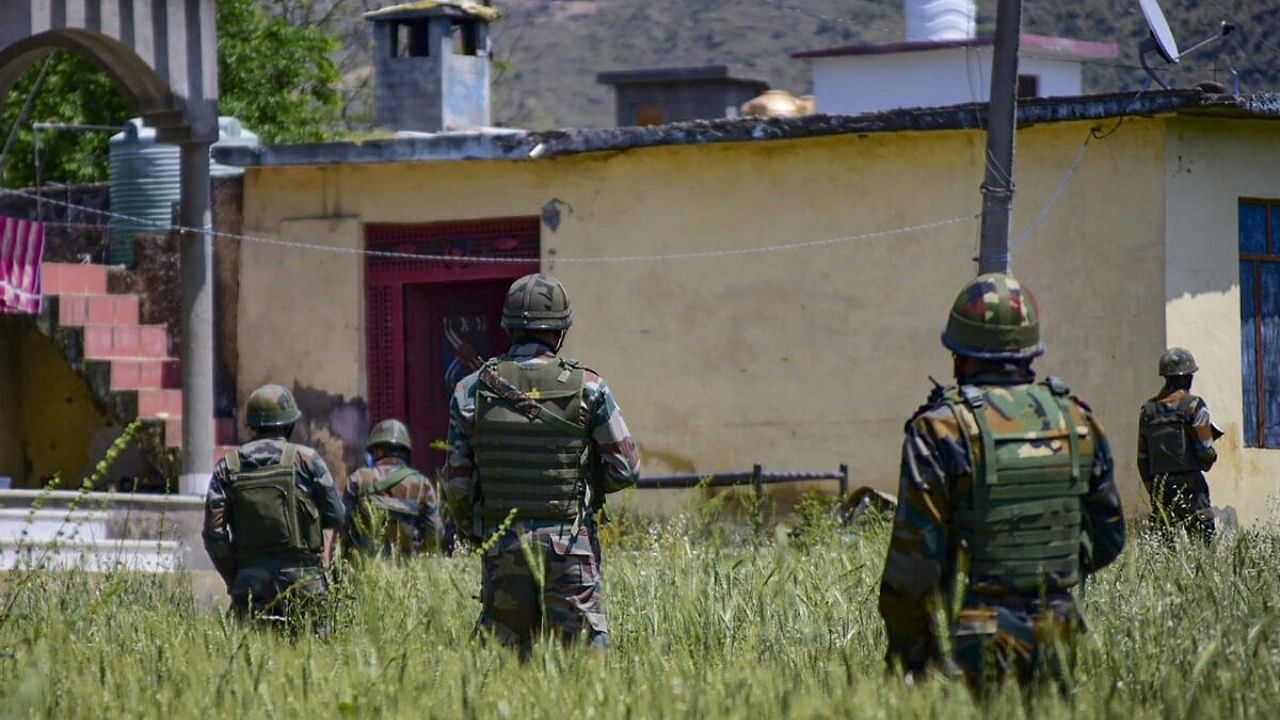
File Photo: Security personnel during a search operation in Poonch district.
Credit: PTI Photo
Srinagar: With militancy in Kashmir on the decline, a seismic shift is unfolding in the rugged terrains of the border districts of Rajouri and Poonch, where the echoes of militancy once seemed distant.
Figures reveal that militants have shifted their focus to Rajouri and Poonch, also known as the Pir Panjal region, where the dense forests and mountainous landscapes provide them ample cover.
Out of the 134 militancy-related killings in 2023, the Pir Panjal region accounted for 53 deaths, roughly 40 per cent. Of the 53 people killed in the twin border districts, 19 were Army personnel, including a few officers.
In 2022, J&K reported 253 militancy-related deaths, which included 30 security personnel, constituting nearly 12 per cent. However, this year, the percentage of deaths reported by the security forces has more than doubled (24.62 per cent), with out of 134 killings, 33 being security personnel.
The higher number of casualties suffered by the Army in the Pir Panjal region this year is the main reason for the higher percentage of deaths among the security forces. The dense forests and mountainous landscapes, once tranquil areas nestled in the lap of the Himalayas, provide ample cover to militants.
The dense forests of Rajouri and Poonch give militants more strategic depth compared to the populated areas of Kashmir. This is evidenced by a slew of ambushes and encounters where militants have kept the army engaged for days and have often managed to slip away.
According to the former commander of the Valley-based 15-Corps, Lieutenant General Syed Ata Hasnain, the dilution of troop deployment and a chequered history of local support in the Pir Panjal region may have led to the activity and presence of militants shifting there.
“The Poonch-Rajouri sector has had a chequered history of local support, which enabled Pakistan to establish a strong proxy presence in the forested and rocky tracts of the Pir Panjal. From May 2020 onwards when the Ladakh sector was activated, some troops were lifted from the Jammu sector and redeployed there,” General Hasnain wrote in a column in a national daily last week.
However, he said the tactical or operational space has not been lost in Poonch-Rajouri and the “overall capability of Pakistan to sustain any success is still limited.”
The retired army commander also said the abrogation of Article 370 has made Kashmir less conducive to separatist forces, forcing Pakistan to change its strategy.
His views were echoed by a senior police officer involved in counter-insurgency operations. “The increasing footprints of surveillance in Kashmir with a stringent mechanism of raids, detentions and higher deployment of security forces in place since 2019 has visibly discouraged local involvement in insurgency,” he said.
The officer said the baton of militancy seems to have been passed on to foreign terrorists from across the Line of Control. “The dense forests and challenging topography provide ideal hideouts to foreign terrorists wanting to evade relentless pursuit,” the officer added.
Anuradha Bhasin, managing editor of Kashmir Times, believes the revival of militancy in Rajouri and Poonch is linked to local anxieties heightening in the wake of loss of autonomy to the region.
Besides, she said, changed strategies of militant groups operating from Pakistan, in light of the post-2019 developments, and the short-sighted politics of the BJP are other reasons for the resurgence of militancy in the Pir Panjal region.